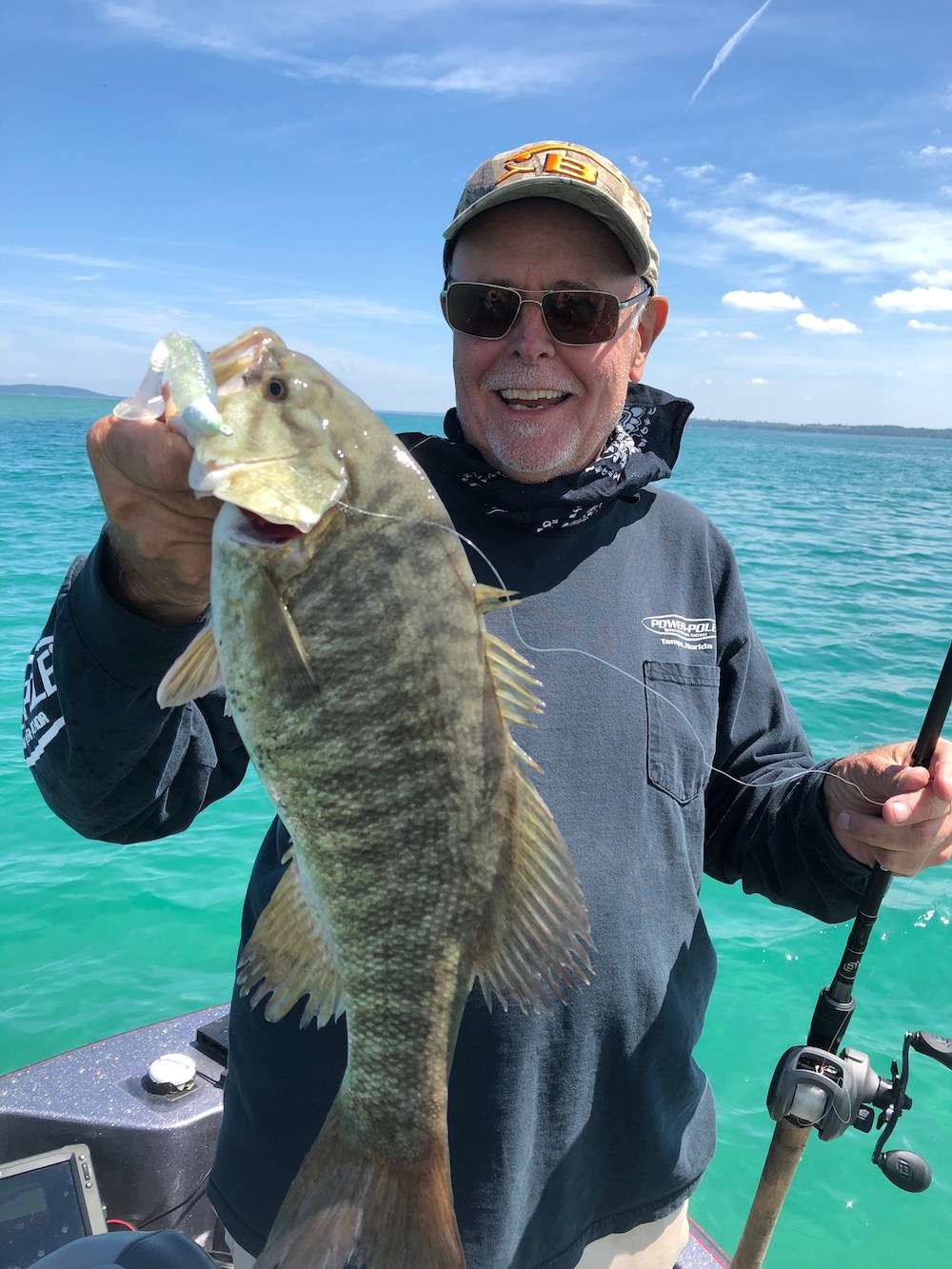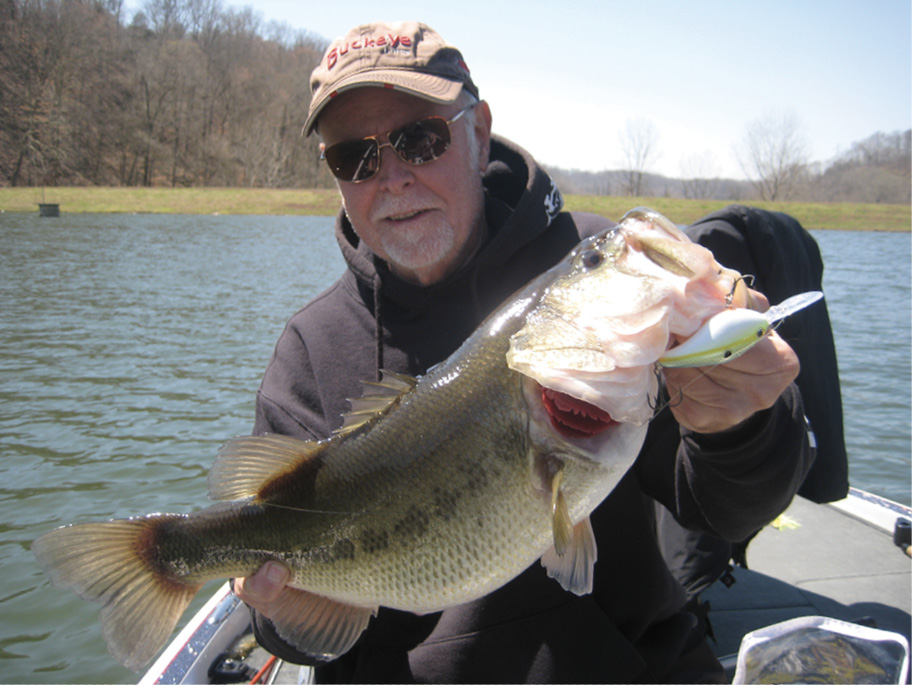
With the beginning of 2022, I can now say that my byline has appeared in Bassmaster for over 50 years. I’ve written for this magazine pretty much nonstop since 1971, when Ray Scott’s newly formed Bass Anglers Sportsman Society was rapidly gaining steam and most current Elite Series pros were yet to be born. Bass fishing has undergone phenomenal changes since then, and as the most senior of Bassmaster’s senior writers, I’ve witnessed them all from a front-row seat.
Harry ‘n’ Charlie
Growing up in the Chicago suburbs, I only got to go bass fishing during annual family vacations, and I vowed to one day live closer to good angling venues. I made this happen in 1970 by accepting a copywriter position at an advertising agency in Little Rock, Ark. One of the agency’s art directors was a jovial fellow named Cliff Shelby, a native Southerner, brilliant cartoonist and die-hard bass fisherman. We bonded instantly and would gab endlessly about fishing when we should have been working. Shelby introduced me to the finer aspects of Southern culture, like black-eyed peas and cornbread at “meat-’n’-three” restaurants and kinfolk with names like Bubba and Sister. Southern culture was new to me, and I soaked it up like a sponge.
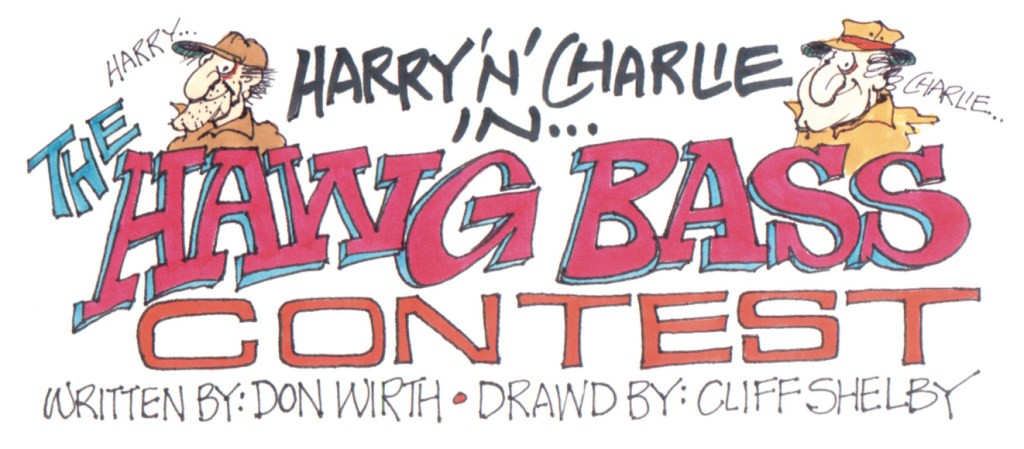
Soon after relocating to Arkansas, I saw my first copy of Bassmaster. Compared to slick hook-and-bullet publications like Outdoor Life and Field & Stream, Bassmaster back then was hardcore to the extreme — a slapped-together affair filled with fuzzy black and white photos of gigantic bass from exotic lunker factories like Lake Eufaula and Toledo Bend. As a native Midwesterner, I’d been enjoying Southerners and their strange ways for several months, and on a whim, I wrote up a humorous yarn featuring two Southern redneck bass nuts from Swamp Gas Corners, USA, named Harry ’n’ Charlie. The characters in the story were loosely based on Shelby, yours truly and members of our local bass club. Shelby drew some killer cartoons to illustrate the yarn, and we sent it off to Bassmaster editor Bob Cobb. Imagine our surprise when Cobb called a few days later — he loved the story and the cartoons and begged for more. Harry ’n’ Charlie debuted in the July/August 1971 Bassmaster,and B.A.S.S. members followed their misadventures in every issue for the next 35 years. Sadly, Shelby passed away in 2017. I’ve had many B.A.S.S. members tell me they loved having their dad or grandpa read “Harry ’n’ Charlie” to them when they were little kids. That makes me feel really old, but in a good way!
The ‘Bass Boom’
As a Bassmaster writer, I witnessed the “Bass Boom” unfold during the 1970s. B.A.S.S. founder Ray Scott was the driving force behind bass fishing’s incredible growth during this decade; his vision of a nationwide fraternity of bass fishermen and a legitimate bass tournament trail was proving to be a roring success. Weekend anglers everywhere were forming bass clubs, fishing in tournaments and buying the same boats, lures and tackle used by their “bass pro” heroes. One of our ad agency clients was a boat manufacturer who graciously provided me with a loaner bass boat. This enabled me to get more serious about bassin’, which in turn prompted me to expand my Bassmaster submissions beyond Harry ’n’ Charlie yarns. A pro-level bass boat at the start of the decade was a rough-riding, 16-foot, tri-hull rig with a 50-horsepower outboard, 12-volt trolling motor and no livewell. That would quickly change, however.
In 1973, I moved to Nashville to work as a TV producer at a bigger ad agency. What little spare time I had was spent interviewing and photographing local bass experts and the occasional pro for Bassmaster articles on everything from shallow largemouth tactics to the latest bass lures. 1973 also saw the birth of the high-performance bass boat as two Tennessee boatbuilders, Allison and Hydra-Sports, married a bass-friendly interior with a pad-bottom racing hull to create 60 mph “bass missiles.” These low-slung, go-fast rigs were a hit with bass anglers (me included) and in my opinion helped attract even more folks to our fast-growing sport.
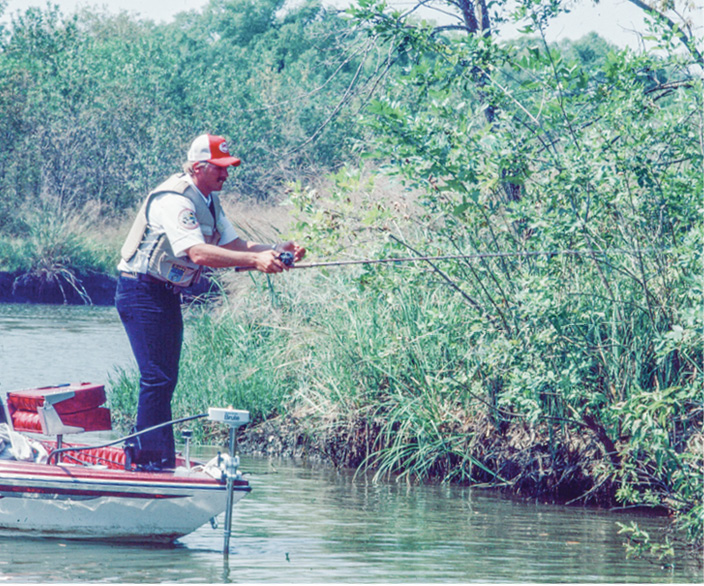
By the mid-’70s, I’d quit the ad biz for full-time outdoors writing. I attended several Bassmaster Classics as a press observer, riding shotgun with the biggest guns in the sport. A couple of Classic memories stand out. At the 1979 event at Lake Texoma, Oklahoma, I was paired with Missouri pro Basil Bacon. After blastoff, Bacon raced to the back of a tributary, opened his boat’s rod box and pulled out a carpeted box, which he quickly bolted to the front casting deck. Standing on this homemade platform enabled Bacon to perfectly execute the deadly “flipping” technique, which was revolutionary at the time. Today, every bass boat has a raised flipping deck. Then there was the 1980 Classic at the St. Lawrence River. This event was held in late September — autumn everywhere else, but winter in upstate New York! Upon learning that the shirtsleeve temperatures greeting us upon our arrival in Alexandria Bay were due to plummet into the 20s overnight, I led a posse of outdoors writers into town where we bought out the local dry goods store’s entire supply of wool socks and down jackets. I still have the geeky red plaid trapper’s hat I wore during that last frigid day of Classic competition.
Memorable characters
My job has allowed me to pick the brains of the world’s best bass fishermen — tournament pros, guides and local experts. Florida big-bass hunter Doug Hannon, aka the Bass Professor, was the most unique angler I’ve ever worked with. Dave Precht, who replaced Bob Cobb as Bassmaster editor in 1984, assigned me many articles with Hannon, who had caught 500 largemouth weighing 10 pounds or more, including a 17-pound behemoth. A keen observer of bass behavior and perhaps the earliest proponent of the catch and release of trophy-sized bass, Hannon was the antithesis of the run-and-gun tournament angler. Insisting on a stealthy approach, he fished central Florida’s remote lakes and rivers from a 16-foot camouflaged johnboat. Hannon was also an inventor; he designed MotorGuide’s weedless trolling motor prop and the microguides currently used on many premium bass rods. He died in 2013; I’m proud that I helped Bassmaster spread his conservation message throughout the B.A.S.S. community.
Living in central Tennessee has put me in close proximity to big smallmouth and the colorful characters who chase after these elusive fish. Some of my most memorable assignments took me to Dale Hollow Lake, home of the world-record bronzeback. In a Bassmaster article, smallmouth guide Bennie McBride pointed out that while largemouth love shallow water replete with brushy/weedy cover, smallmouth relate more to structural edges and subtle bottom transitions — thereby explaining why bank-beating bassers seldom catch a big bronzeback. McBride summed up the difference with one of my all-time favorite Bassmaster quotes: “Smallmouth ain’t largemouth!” Like Shakespeare said, “Brevity is the soul of wit!”
My quest to get the perfect photo angle when shooting my angler subjects has occasionally put me in harm’s way. During a photo shoot with Bill Dance at Pickwick Lake, the legendary basser first beaned me with a 1/2-ounce jig, then stuck a crankbait hook in my finger. While I was doing an article with Tom Mann about a new crankbait he’d designed, Mann went to make a cast and buried both of the plug’s trebles deep in my scalp. It took a trip to the Eufaula hospital’s emergency room to remove the lure. And, West Virginia pro Jeremy Starks accidentally knocked one of my Nikon cameras into the lake. All in a day’s work, I reckon.
Day on the Lake
Back in 1997, a buddy and I were fishing a small lake where we’d both caught lunkers previously, but on that day, the fish weren’t cooperating. I wondered aloud how a B.A.S.S. pro would fish this insignificant puddle. “That’ll never happen,” my friend replied, laughing. “Pros only fish tournaments on big lakes.” Dude, never say never to a Bassmaster writer! I discussed the concept of putting a big-name pro on an obscure lake he’d never seen before with Precht. He suggested that Oregon pro Jay Yelas, one of the hottest young sticks at the time, would be the ideal guinea pig. Yelas accepted the challenge and fished the “mystery” lake on a gloomy April morning while I recorded everything he did to locate and catch bass in timeline fashion. Yelas ended up putting a major beatdown on ’em; his five biggest largemouth weighed 24 1/2 pounds. The narrative and photos proved so compelling that Precht made “Day On The Lake”a regular Bassmaster feature.

Not every “Day On The Lake” outing has proved as successful as that first one, however. In 1999, Missouri pro Denny Brauer, who’d recently won the Classic, fished the same small lake as Yelas but failed to boat a single keeper bass. “Bass fishing can be a humbling experience,” he noted. No kidding!
The vast majority of pro anglers are a pleasure to work with, but there’s an exception to every rule. I recall a “Day On The Lake”outing with one pro who was cranky from the get-go. I mentioned that the mystery lake he’d be fishing didn’t have a huge population of bass, but if you got three bites, one of them would likely be a 6-pounder. “Now that’s a crock,” he grumbled. He then proceeded to catch two nonkeepers, followed by — you guessed it — a 6-pounder. I was dying to say, “I told you so!” but wisely kept my mouth shut. When the day ended, the pro handed me a two-page typewritten list of his sponsors, many of which were local. “Make sure you mention every one of these sponsors in my article!” he insisted. When I replied that this wasn’t going to happen, he got in his truck, slammed the door and angrily roared away, peeling rubber as he exited.
Roasted by Dance
I was fortunate to be inducted into the Bass Fishing Hall of Fame in 2017. I asked Bill Dance if he’d deliver my introduction; he agreed and asked me to send him an outline of my journalistic accomplishments as talking points. I should have known better than to expect a straightforward intro from Dance. The crowd applauded wildly as he took to the podium, but the mood in the room quickly turned dark.
“They asked me if I’d say a few words about Don Wirth,” Dance began. “I said I would, but the more I thought about it, the less I wanted to do it. You see, the truth is, I can’t stand Don Wirth.”The audience let out an audible gasp, then you could have heard a pin drop. Fortunately, Dance was only kidding and proceeded to turn my introduction into a hilarious roasting.
The new crew
Working with the new crew of B.A.S.S. pros has been a pleasant surprise. I was disheartened when many veteran Elite Series pros, friends I’d done multiple articles with over the years, left B.A.S.S. for a competing tournament organization. Many of the anglers B.A.S.S. recruited to fill the depleted Elite roster were only in their 20s. Could they possibly have the skill set of the seasoned pros I was used to working with? “Worry not, old man,” current Bassmaster editor James Hall told me. “These kids are skilled beyond their years. Many of them excelled on the college circuit, and they all burned up the Bassmaster Opens. They’re smart, tech-savvy and fiercely competitive.” Hall was right on — these young dudes are a force to be reckoned with. Their prowess with today’s ultrasophisticated bass boat electronics is especially noteworthy. Having written about bass fishing since the advent of the flasher, I admit to having mixed feelings about the new forward-shooting sonar units every pro relies upon today. Does this give them an unfair advantage over the fish? Possibly, but then I recently heard a podcast where pro anglers were discussing how bass were already becoming wary of the powerful signals from these units and are learning to avoid them. Time will tell.
It’s been an awesome 50 years as a Bassmaster writer. I’ve worked with the best editors in the business and the best bass anglers on the planet and have made countless friends throughout the fishing industry. I’ve watched our sport blossom from its humble beginnings, and I’m confident that the best is yet to come!
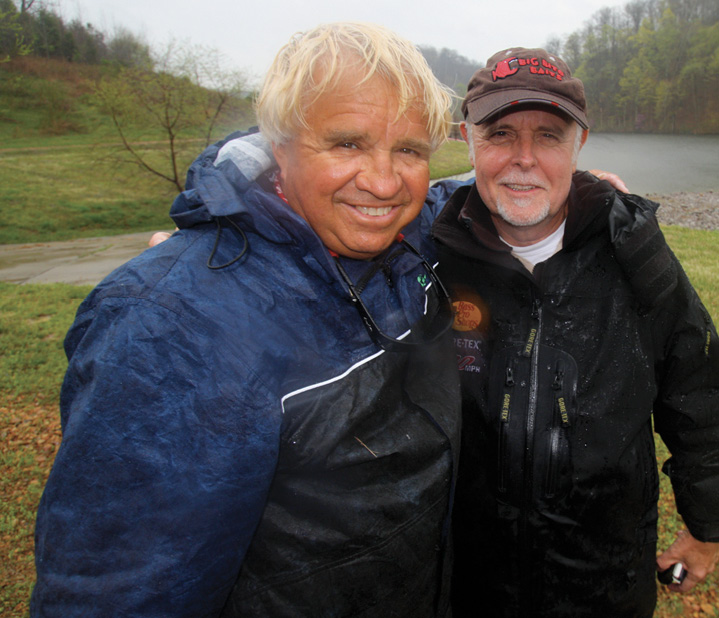
Originally appeared in Bassmaster Magazine 2022.

